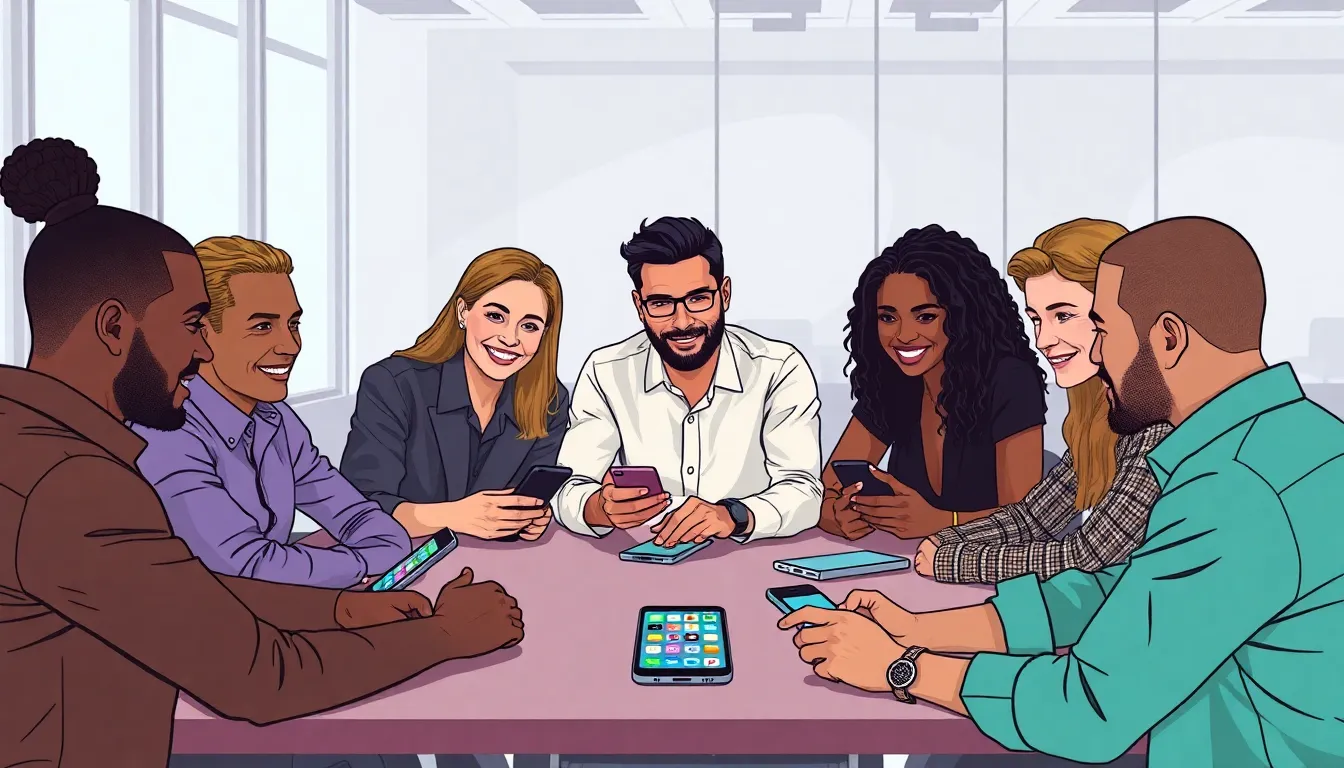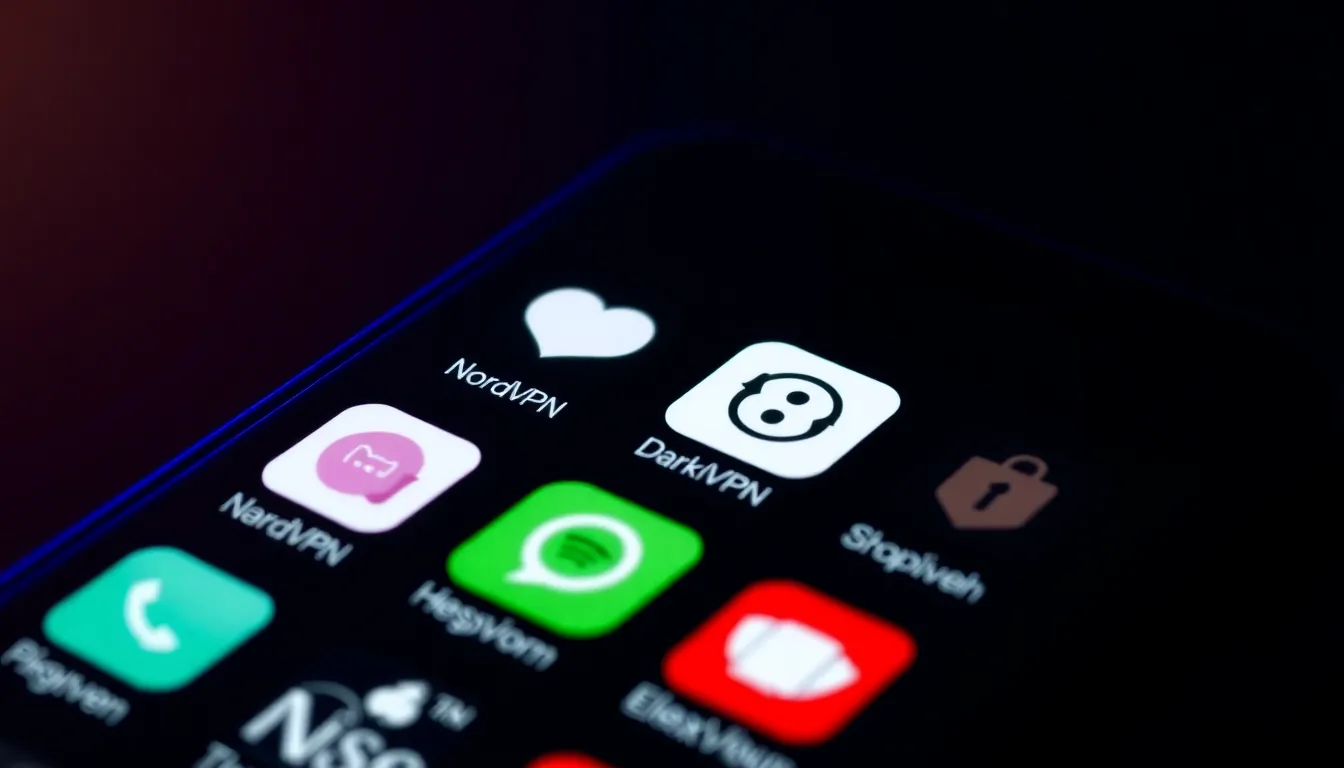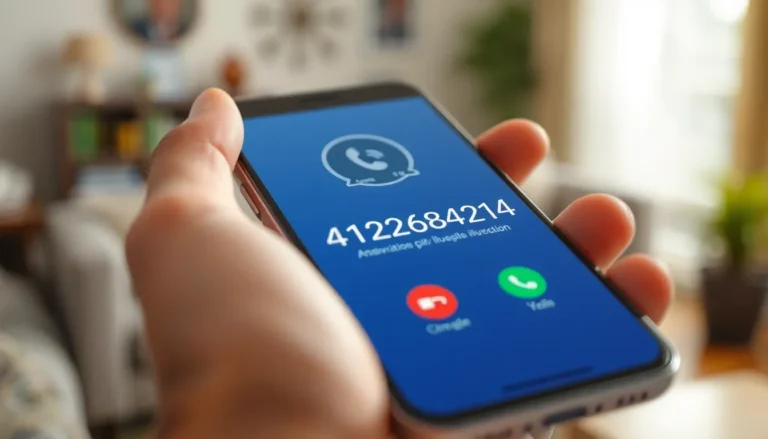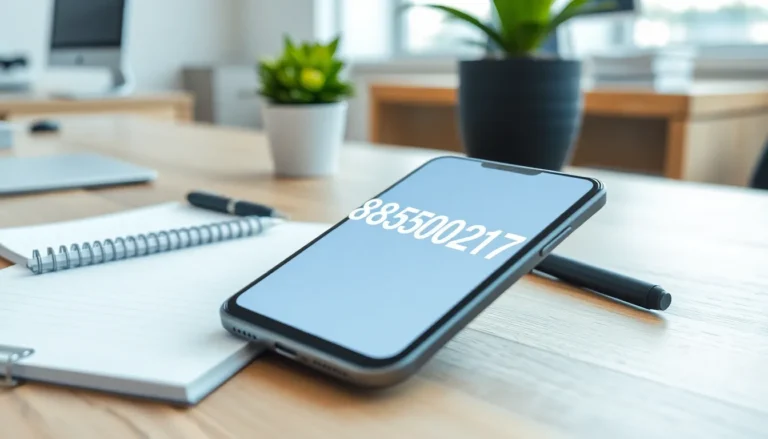In a world where every tap on an iPhone can lead to endless possibilities, some apps lurk in the shadows, waiting to be discovered. These dark apps, often hidden from the casual user, promise a blend of intrigue and functionality that can spice up anyone’s digital life. Whether it’s secret messaging, stealthy photo sharing, or even a hidden vault for your most sensitive data, these apps are like the secret menu at your favorite restaurant—exciting and a little bit naughty.
Table of Contents
ToggleOverview of Dark Apps on iPhone
Dark apps on iPhone encompass a range of applications designed for privacy and secrecy. Users often find them appealing due to capabilities like secret messaging and concealed photo sharing. Some apps provide secure storage specifically tailored for sensitive information, which adds an extra layer of protection.
These apps differ from mainstream applications. Many focus on privacy-centric features not typically available in standard offerings. For instance, certain apps allow users to communicate without the risk of interception, appealing to those who prioritize security. In addition, options like encrypted messaging ensure conversations remain confidential.
Discreet photo sharing is another sought-after feature. Users can send images that self-destruct after being viewed, minimizing the risk of unwanted exposure. Certain apps even create hidden photo galleries, allowing users to store images away from prying eyes.
Notably, some dark apps integrate with iPhone’s capabilities seamlessly. App functionalities often include biometric security measures like Face ID and Touch ID, reinforcing user trust. Such integration ensures that sensitive data remains only accessible to legitimate users.
Several popular options are available in the App Store. Signal offers end-to-end encryption for messages, while Whisper provides anonymous messaging features. Vault apps, such as KeepSafe, allow for the secure storage of photos and videos.
Overall, dark apps hold significant appeal for users desiring enhanced privacy. They provide the tools necessary to safeguard personal information while enabling users to navigate the digital world with confidence.
Common Types of Dark Apps


Dark apps encompass various categories tailored for enhanced privacy and security. These applications cater to users aiming to keep their personal information safe while enjoying unique functionalities.
Privacy and Security Apps
Privacy and security apps focus on safeguarding sensitive information from unauthorized access. These tools often feature strong encryption techniques and secure cloud storage options. For instance, apps like NordVPN create secure connections while browsing the internet, ensuring anonymity. Similarly, 1Password offers secure password management, keeping login details encrypted and accessible only to the user. Users find these apps invaluable, especially in an era where data breaches are commonplace.
Hidden Messaging Apps
Hidden messaging apps provide a sanctuary for confidential conversations. Signal leads the pack with its end-to-end encryption, ensuring that messages remain private between users. Another popular option, Telegram, includes self-destructing messages, adding an extra layer of security. Many users appreciate the ability to create secret chats in these apps, where messages disappear after a set time. These features cater to those looking to communicate discreetly without fear of data leaks or exposure.
Risks Associated with Dark Apps
Dark apps pose several risks that users should recognize before downloading. These applications, while providing privacy features, often come with concerning implications.
Data Privacy Concerns
Data privacy is a primary risk associated with dark apps. Users might assume their information remains secure, yet many dark apps lack transparency about data usage. Some applications collect user data without consent, compromising personal information. For instance, insecure cloud storage solutions can lead to unauthorized access. Privacy policies may be vague, making it difficult for users to understand how their information is handled. Additionally, sensitive data could be shared with third parties, resulting in breaches that undermine the intended security benefits. Users must prioritize apps with robust encryption and clear privacy practices to reduce risks.
Potential for Malware
Malware presents another significant risk linked to dark apps. Certain applications, especially those not available on the App Store, may contain harmful software designed to exploit users. Downloading these apps can lead to compromised devices, theft of personal information, or unauthorized access to sensitive accounts. Additionally, malware can create significant vulnerabilities, enabling remote access to devices. Users should exercise caution and research apps thoroughly, focusing on user reviews and reputable sources to identify potential threats. By avoiding unverified sources, individuals can diminish the chances of exposing their devices to malicious attacks.
How to Spot Dark Apps on Your iPhone
Identifying dark apps on an iPhone involves several key steps. Check the app permissions carefully. Many dark apps request extensive access to contacts, photos, and location data, raising privacy concerns. Users should review these permissions regularly to ensure appropriateness.
Examine the app’s download source. Legitimate apps typically come from the App Store, which has strict review processes. Apps found outside the App Store may pose higher risks of malware or data breaches. Look for apps that provide transparent privacy policies detailing data usage. Reputable applications explain how they handle user information.
Evaluate user reviews and ratings. Surf through both the App Store and independent review sites. A lack of reviews or low ratings may indicate an app’s untrustworthiness. Analyze the app’s features for hidden functions. Some apps might promote themselves for entertainment, while concealing secret communication or storage capabilities.
Monitor unusual battery or data usage. Dark apps can drain resources by running background processes or syncing data frequently. Users should be cautious if an app consumes more resources compared to similar applications. Seek out encryption features in messaging and storage apps. Robust encryption ensures user data remains private, reducing risks from data breaches.
Finally, prioritize using security-focused apps such as Signal or NordVPN. Opting for these known brands enhances user privacy. By applying these techniques, users can better identify dark apps that may compromise their security on iPhones.
Best Practices for Staying Safe
Understanding the risks associated with dark apps is essential for iPhone users. Choosing apps with strong encryption ensures messages remain private. Regularly reviewing app permissions also helps maintain control over personal data. Prioritizing reputable sources for app downloads is crucial, particularly when avoiding less secure platforms.
Researching apps thoroughly before installation significantly reduces the chances of encountering malware. Evaluating user reviews and ratings can provide valuable insights into an app’s reliability. Monitoring battery and data usage helps identify suspicious activity linked to dark apps. Verifying the presence of transparent privacy policies indicates a developer’s commitment to user security.
Using security-focused apps like Signal and NordVPN enhances privacy effectively. Each interaction with an app should reinforce the importance of safeguarding sensitive information. Should an app seek excessive permissions, reconsider its necessity. Protecting devices with updated security features and iOS updates minimizes vulnerabilities.
Staying informed about the latest data practices and trends allows users to make proactive decisions. Engaging with communities focused on app security fosters better awareness of potential threats. Filtering out unverified sources significantly lowers risks while selecting dark apps. Ultimately, following these practices equips users with the tools needed for safer app experiences.



